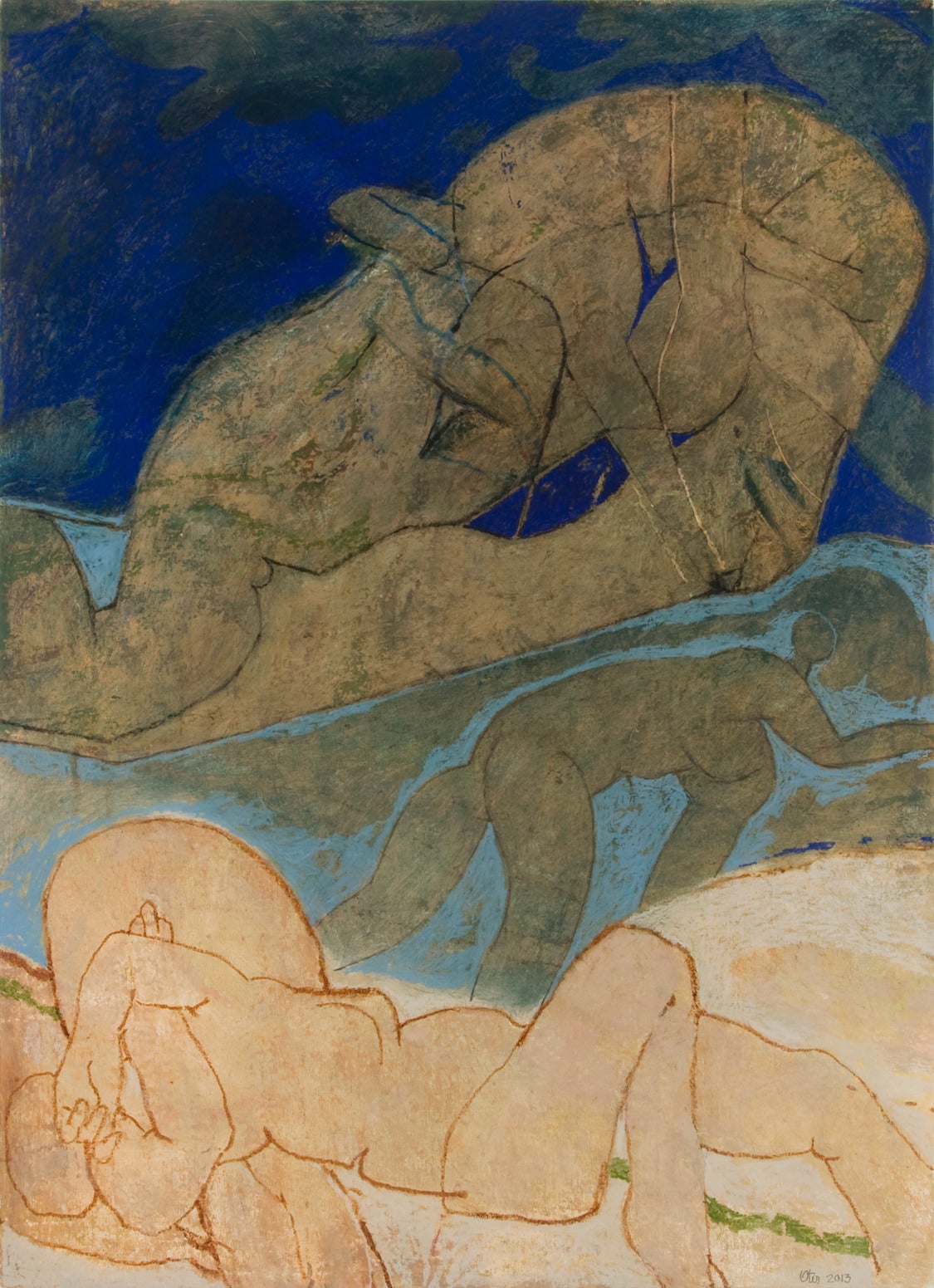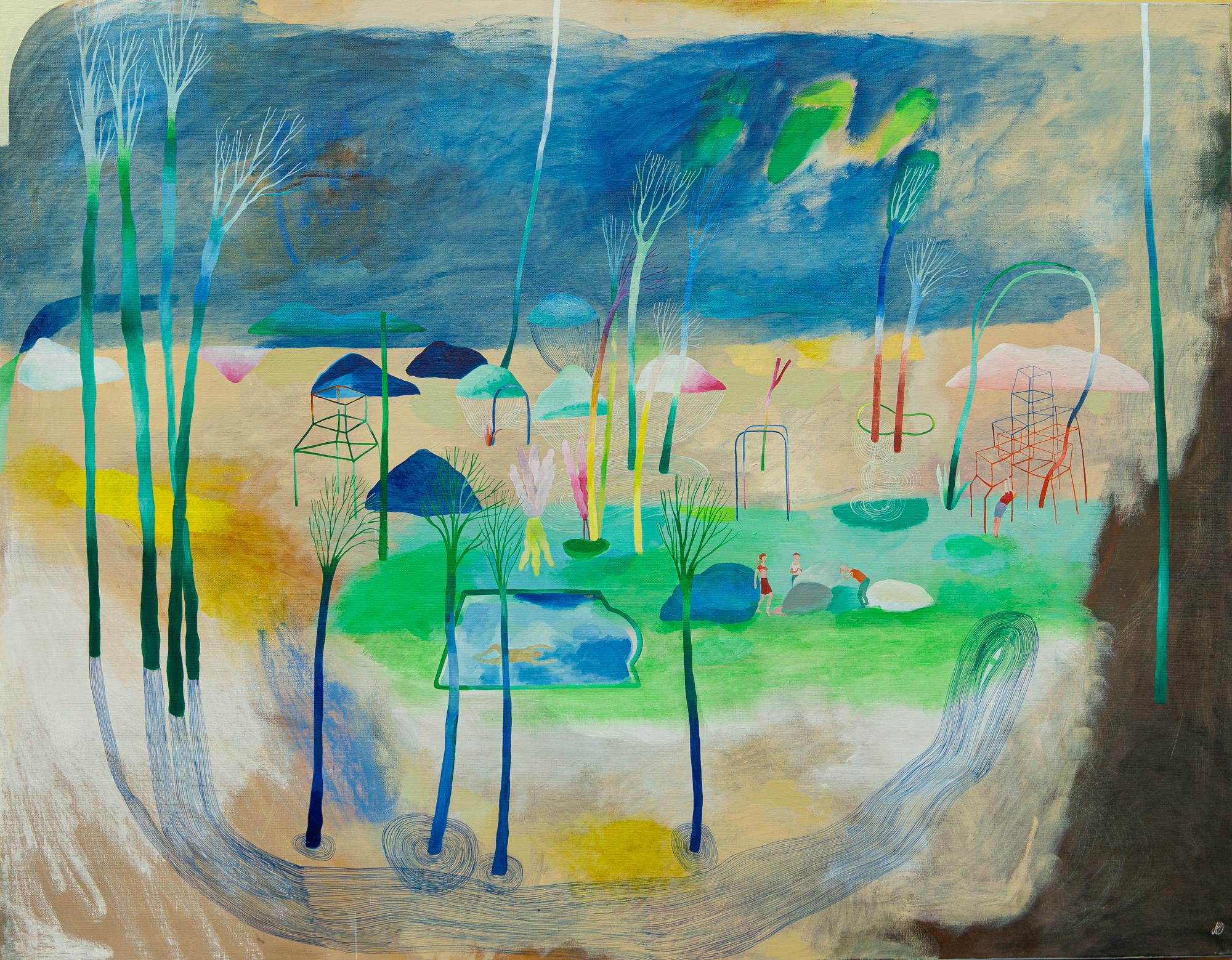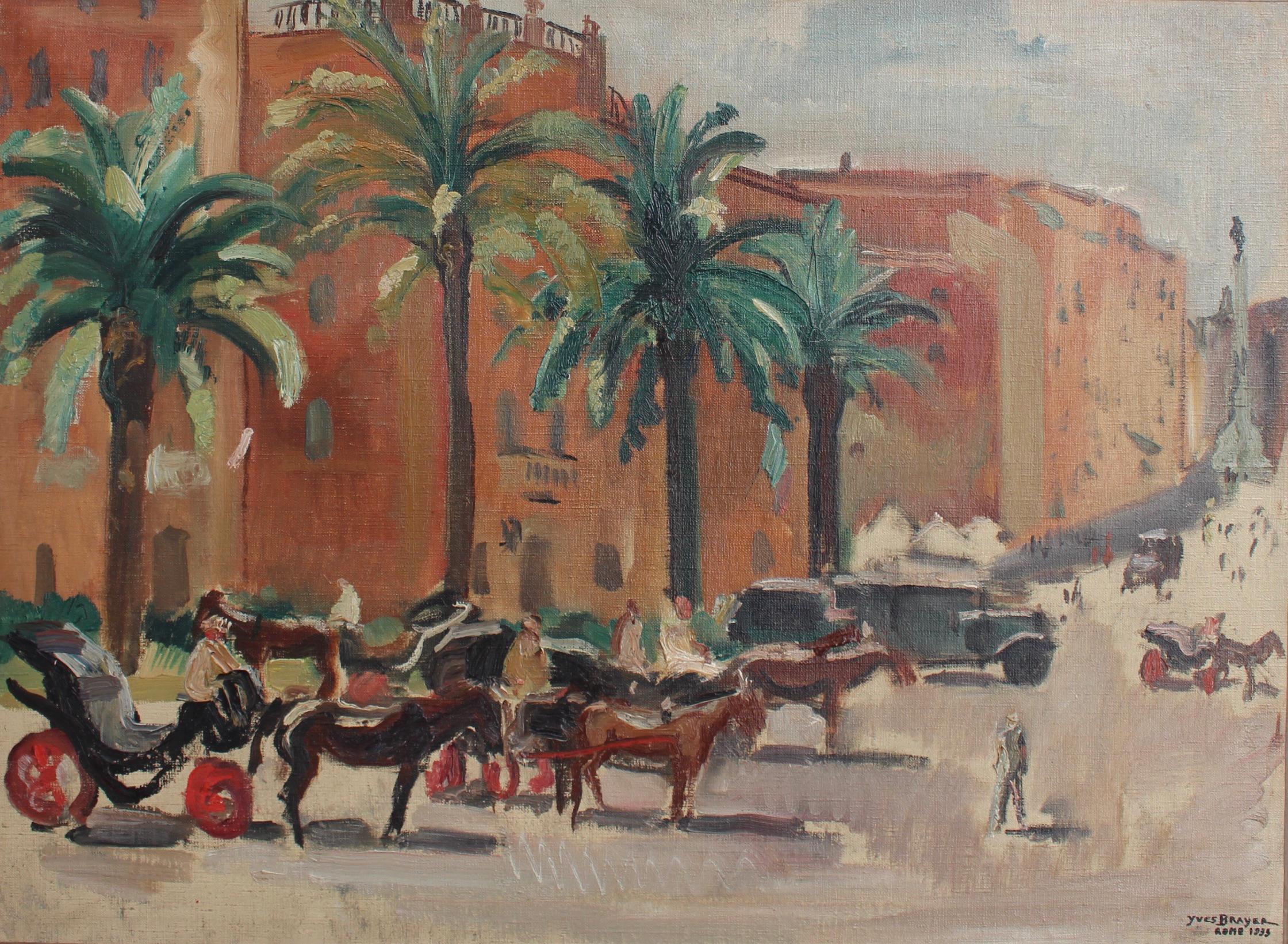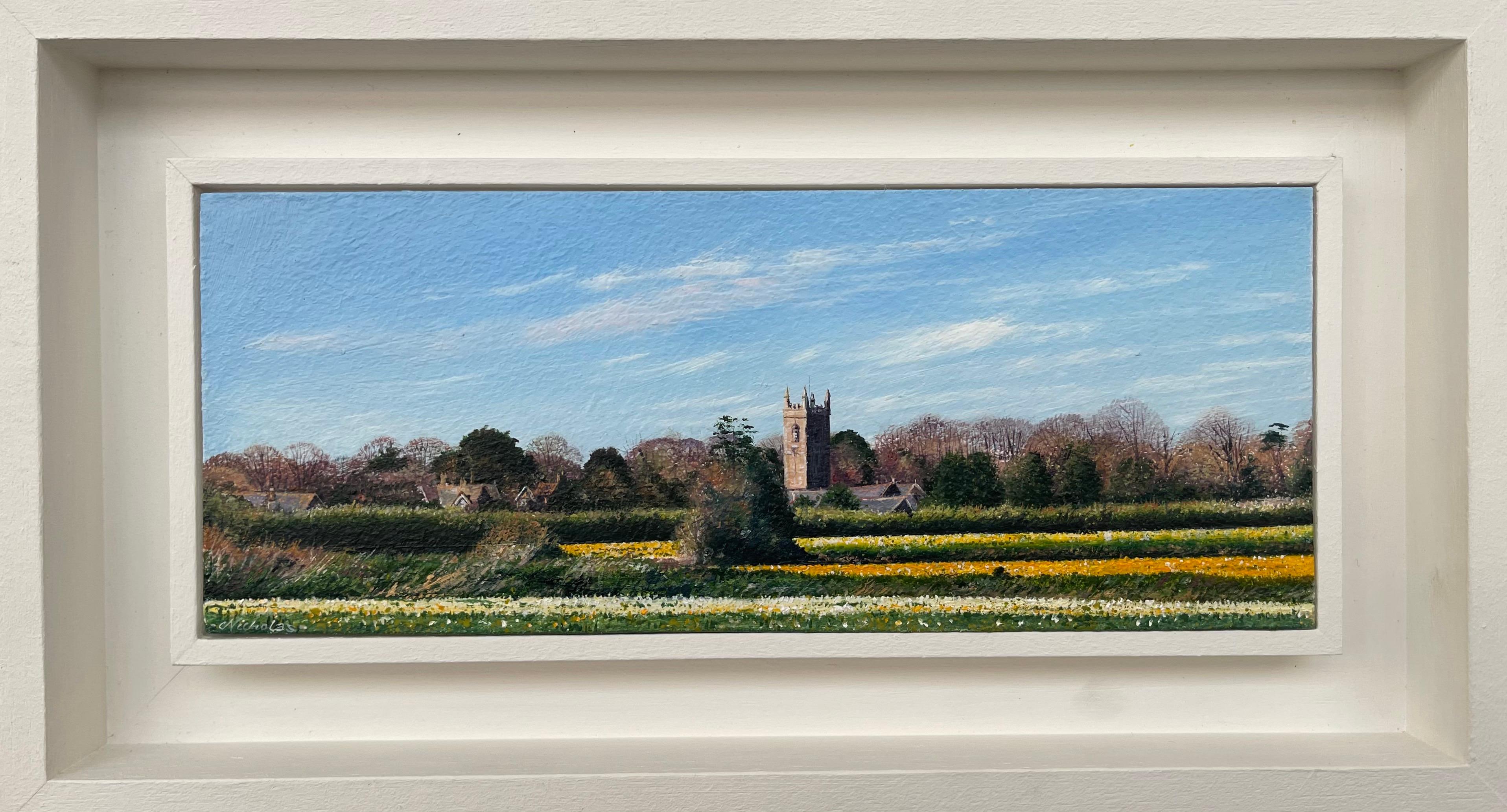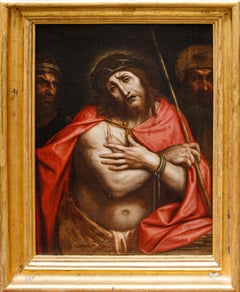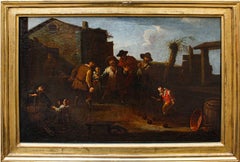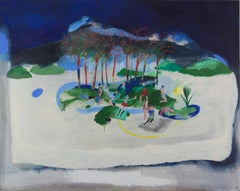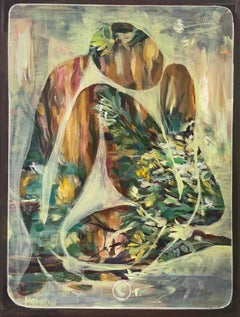Items Similar to Battle scene
Want more images or videos?
Request additional images or videos from the seller
1 of 13
Francesco Monti called 'Brescianino delle Battaglie (Brescia, 1646 - Parma, 1703)Battle scene
About the Item
Francesco Monti, known as Brescianino delle Battaglie (Brescia, 1646 - Piacenza, 1703)
Battle scene
Oil on canvas, 90 x 117.5 cm
Framed 112 x 139.5 cm
Francesco Monti, better known as Il Brescianino or The Brescianino of Battles, was born in Brescia in 1646. Pellegrino Antonio Orlandi (1704), who was his first biographer, informs that he had as his master the Lucchese painter Pietro Ricchi. All the following literature has embraced the news, mostly assuming that the alumnuship took place during Ricchi's Venetian sojourn, placed in the third quarter of the 17th century. The total absence of data on Monti's early activity, however, makes it almost impossible to assess the importance of Ricchi's style in his formation, and, on the other hand, it is not easy to identify derivations from the master in his later production. Monti was, however, also a pupil of Jacques Courtois known as Borgognone, according to Orlandi himself and a letter sent to Monti by his friend Carlo Giuseppe Fontana in 1694, reported in the monograph devoted to the Brescian-born artist by Arisi (1975, p. 34). Burgundy's teaching, although its chronological and geographical circumstances are unknown, must have played a decisive role in Monti's refinement as a painter of battles. The difficulties of outlining a certain catalog of his work, however, in the absence of a sufficient amount of documented paintings, are also reflected in the definition of this artistic relationship. During his formative phase, the artist pursued numerous trips that took him to various places on the Peninsula: particularly significant was the one to Naples, where he had the opportunity to observe firsthand the work of Salvator Rosa, which strongly conditioned his entire pictorial production. Having reached full artistic maturity, Brescianino entered the service of the Farnese family on a permanent basis in 1681.There are numerous works, mainly on war subjects, created by the artist for the centers of Parma and Piacenza in the last two decades of the seventeenth century. Particularly appreciated at the Farnese court, the artist was able to build a prolific workshop in Parma, at which figures such as Giovanni Canti, Ilario Spolverini, Angiolo Everardi, known as the Fiamminghino, and Lorenzo Comendich were trained. Monti's paintings are characterized by wide spaces "that are lost among the smoke and dust," by the tangle of armed men in the foreground with unhorsemen unhorsed and horses soaring in the last moment of life. In addition to battles, which certainly constitute the most substantial and interesting segment of his production, the painter executed paintings with religious themes and seascapes in which the influence of Pieter Mulier, known as The Tempest, with whom he had a deep friendship, can be seen. After setting up an active and established workshop, the artist, who was particularly successful at the Farnese court, died, probably in Piacenza, in 1703 (Sestieri, 1999, p. 206).
The canvas in question depicts a clash of knights with firearms. The brilliant armors of the fighters stand out against a cloud-laden sky, facing the outline of a city and a striking natural landscape. The scene is shot in close-up, following a ploy typical of the battles painted by Francesco Monti, so that the viewer feels like a direct witness to the scene he or she is witnessing. This turns out to be one of the key features of the Brescianino's production, to which are added great chromatic vivacity, the interplay of various perspectives and careful stage direction.
- Creator:Francesco Monti called 'Brescianino delle Battaglie (Brescia, 1646 - Parma, 1703) (1646 - 1703)
- Dimensions:Height: 35.44 in (90 cm)Width: 46.07 in (117 cm)
- More Editions & Sizes:90x117 cmPrice: $21,151
- Medium:
- Period:
- Condition:
- Gallery Location:Milan, IT
- Reference Number:1stDibs: LU2639215520262
About the Seller
No Reviews Yet
Vetted Professional Seller
Every seller passes strict standards for authenticity and reliability
1stDibs seller since 2023
- ShippingRetrieving quote...Shipping from: Milan, Italy
- Return Policy
Authenticity Guarantee
In the unlikely event there’s an issue with an item’s authenticity, contact us within 1 year for a full refund. DetailsMoney-Back Guarantee
If your item is not as described, is damaged in transit, or does not arrive, contact us within 7 days for a full refund. Details24-Hour Cancellation
You have a 24-hour grace period in which to reconsider your purchase, with no questions asked.Vetted Professional Sellers
Our world-class sellers must adhere to strict standards for service and quality, maintaining the integrity of our listings.Price-Match Guarantee
If you find that a seller listed the same item for a lower price elsewhere, we’ll match it.Trusted Global Delivery
Our best-in-class carrier network provides specialized shipping options worldwide, including custom delivery.More From This Seller
View AllAeneas Salmeggia, Ecce Homo
Located in Milan, IT
Enea Salmeggia known as Talpino (Bergamo, 1565 - 1626), second decade of the 17th century
Ecce homo
Oil on canvas, 84 x 61 cm
Framed, 103 x 77 cm
The work presented here depicts ...
Category
17th Century Other Art Style Figurative Paintings
Materials
Canvas, Oil
The Fishmonger Painted by Giacomo Francesco Cipper known as the Todeschini
By Giacomo Francesco Cipper (Todeschini)
Located in Milan, IT
Giacomo Francesco Cipper, called the Todeschini (Feldkirch, 1664 - Milan, 1736)
The fishmonger
Oil on canvas, 64 x 83 cm - Framed, 85 x 101 cm
The crisp harbor air that saturates ...
Category
Late 17th Century Figurative Paintings
Materials
Canvas, Paint, Oil
Game of bowls Oil painting on canvas by Domenico Olivero
Located in Milan, IT
Domenico Olivero (Turin, August 1, 1679 - January 13, 1755)
Game of bowls
Oil on canvas, 43 x 65 cm
With frame, 54.5 x 76
Expert opinion Prof. Alberto Crispo
The painting shown here depicts peasants playing bowls near a farmhouse, while one of them offers sweets to a little girl. The canvas, in my opinion, can be traced back to the hand of Pietro Domenico Olivero (Turin, August 1, 1679 - January 13, 1755), as revealed by comparisons with other works by the artist, such as the Peasants' Feast already at the Gilberto Zabert Gallery in Turin, where we find an entirely similar layout, with the figures crowded around the building, placed on the left, and some household goods piled up on the right, including a copper cauldron almost identical to the one sketched in our painting. But see also other similar subjects painted by the Turin-based artist, such as the Game of Bowls already at the Cantore Gallery in Modena or the other version on the Genoese market in 2019, which, although radically different compositionally, confirm the painter's interest in playful themes and manifest the same ways in delineating characters, with synthetic and robust brushstrokes. The artist was born in Turin, in the parish of St. Thomas, on August 1, 1679 to Giovanna and Francesco, a carver by profession. He trained at the workshop of the painter and architect Melchiorre Baldassarre Bianco. He was esteemed by Victor Amadeus II of Savoy, who commissioned paintings for the Venaria Reale (1714), the Royal Palace of Turin (1716), and Rivoli Castle (1724), as well as by his ministers Pietro Mellarède and Carlo Vincenzo Ferrero di Roasio marquis of Ormea whose collections counted many of the painter's works. His success on the Turin art scene earned him election as prior of the Accademia di San Luca in Turin (1726). In 1731 he painted the eleven canvases with Stories of Franciscan Saints in the sacristy of the church of St. Thomas in Turin, while in 1734 he made the Marriage at Cana for the sanctuary of Oropa. The Savoy commissions continued with the ten canvases executed for the castle of Agliè (1737), the decoration of the third room of the New Archives in the Royal Palace of Turin (1739-41), and the thirty or so works for the hunting lodge at Stupinigi (1748-51). The painter also measured himself in designing sets for the Teatro Regio in Turin (1745-46). He made his will on November 15, 1754, and died in his hometown on January 13, 1755. Olivero's genre scenes, such as the one commented on here, reveal a focus on Flemish painting, particularly by David Teniers the Younger, Peter Mauritz Bolckman, Theodor Helmbreker, and Cornelis de Wael, as well as Roman bamboozlers such as Pieter van Laer, Michelangelo Cerquozzi, and Jan Miel...
Category
18th Century Figurative Paintings
Materials
Canvas, Paint, Oil
Assunzione della Vergine Dipinto di Giovanni Coli e Filippo Gherardi
Located in Milan, IT
Giovanni Coli (San Quirico, 1636 - Lucca, 1681), Filippo Gherardi (Lucca, 1643- 1704)
Assunzione della Vergine
Olio su tela, cm 95 x 70
Con cornice cm 111 x 85
La tela in esame è...
Category
17th Century Figurative Paintings
Materials
Canvas, Paint, Oil
Camp scenes Pair of paintings Angela Maria Pittetti known as Palanca
Located in Milan, IT
Angela Maria Pittetti known as Palanca (Palancato, 1690 - Turin, 1763)
Hunting rest
Camp scene
(2) Oil on canvas, 85 x 66 cm - with frame 90 x 71 x 4 cm
A work of Piedmontese sco...
Category
18th Century Figurative Paintings
Materials
Canvas, Paint, Oil
Battle scene Oil painting on canvas Attributed to Karel Breydel
By Karel Breydel
Located in Milan, IT
Attr. to Karel Breydel, known as the Knight of Antwerp (1678 - 1733)
Battle with knights and landscape in the background
Oil on canvas, cm 44.5 X 36.7
Frame 52.5 x 45 cm
The pain...
Category
Late 18th Century Figurative Paintings
Materials
Canvas, Paint, Oil
You May Also Like
Arbitrary landscape cut-out #2 - Hélène Duclos, Contemporary figurative painting
By Hélène Duclos
Located in Paris, FR
Oil on canvas
Signed
Unique work
1 / Hélène DUCLOS, 2016 – Artist Statement
“Questioning the human condition and the position of being alive – What is i...
Category
2010s Contemporary Landscape Paintings
Materials
Canvas, Oil
"What about stereotypes?" 3 in the triptych. Decorative social art
Located in Zofingen, AG
The third work of the triptych “What about stereotypes? ”
Female silhouette combined with flowers - a decorative subject - but with a deep concept, a series of paintings were prese...
Category
2010s Fauvist Figurative Paintings
Materials
Canvas, Oil
What about stereotypes? 1 in the triptych. Female silhouette
Located in Zofingen, AG
The first work of the triptych “What about stereotypes? ”
Female silhouette combined with flowers - a decorative subject - but with a deep concept, a series of paintings were presen...
Category
2010s Fauvist Figurative Paintings
Materials
Canvas, Oil
"Untitled, " Sebastian Gross-Ossa, Contemporary Figurative Painting
Located in New York, NY
Sebastian Gross-Ossa (American, b. 1966)
Untitled, 2000
Oil on canvas
14 1/8 x 11 inches
Signed and dated on the reverse
Category
Early 2000s Contemporary Figurative Paintings
Materials
Canvas, Oil
$3,200 Sale Price
20% Off
Lake (wild)
By Darlene Cole
Located in Montreal, Quebec
Childhood, a reoccurring theme in Darlene Cole’s work, is represented by prepubescent girls and boys, engaged in some type of action. Without adult supervision, these activities confer on Cole’s children an adult-like aura, empowering them. The artist cites Neil Postman’s 1982 book about the decline in innocence in American culture The Disappearance of Childhood as a text that informs her work. In it, Postman argues that communications technology, such as the invention of the television and later, the Internet, contributed to children losing their innocence, thus transforming them into young adults.
A source of inspiration for Cole are the works of the Pre-Raphaelite Brotherhood, a group of English painters, poets and critics, founded in 1848. They studied nature attentively, employed vivid colours and depicted unconventional-looking women. Just like in Pre-Raphaelite works, the girls in Cole’s paintings embody enigma, distance, and beauty.
The past, in general, is a great source of inspiration for the artist. Cole’s cottage, or ‘artist’s retreat’ as she calls it, was built at the beginning of the 20th century. Since she kept all the original furniture and linens intact, the cottage, on the side of a lake, seems to belong to the past.
Nature, another omnipresent theme in Cole’s work, is in many works represented by flowers, such as pink David Austin roses...
Category
2010s Impressionist Figurative Paintings
Materials
Canvas, Oil
World War II Naval Engagement
By Anton Otto Fischer
Located in Fort Washington, PA
Signed & Dated
Category
1940s Figurative Paintings
Materials
Canvas, Oil
